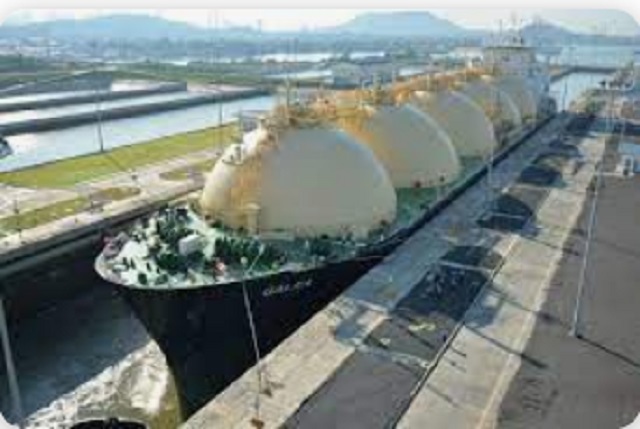Alberta
Investigation concludes police shooting of suspect holding gun a reasonable use of force

From the Alberta Serious Incident Response Team
RCMP used reasonable force during serious injury incident
On April 29, 2019, the Alberta Serious Incident Response Team (ASIRT) was directed to investigate the circumstances surrounding injuries sustained by a 33-year-old man during his arrest by members of the Lloydminster RCMP that same date.
On that date, members of the Lloydminster RCMP observed a male driver operating a stolen Dodge Ram 2500 truck within Lloydminster city limits. The truck had been stolen earlier that day during a break and enter at a local vehicle repair shop. Video footage from the repair shop depicted the 33-year-old man as the individual responsible for the break and enter, and at the time, the man was also under investigation in relation to a homicide that had occurred on April 27, 2019.
Police attempted to conduct a traffic stop on the stolen truck, but the truck fled. Officers elected not to pursue the vehicle; however, the vehicle was known to have engine problems and was not expected to be drivable for long. A short time later, two police officers observed the stolen truck in an industrial area of the city. In order to avoid a pursuit, both officers followed the truck from a distance until they observed plumes of smoke emanating from the truck, leading them to believe that the vehicle’s engine had failed.
The two officers stopped their fully marked police vehicles in front of and behind the truck, blocking its path. The man exited the driver’s side door of the truck and fled on foot toward the rear of the truck and into a fenced compound. One of the police officers pursued the man on foot while the second ensured the stolen truck was empty before joining the foot pursuit a short distance behind. As the first officer ran, he called out to the man by name, advising him that he was under arrest. The man continued to run, but soon lost his footing and stumbled on the gravel. The officer drew his conducted energy weapon (CEW) and issued a verbal command for the man to stay down. When the man rose to his feet and began running again, both officers observed a black handgun in the man’s right hand. The first officer radioed that the man had a gun, then drew his service pistol from its holster and issued repeated verbal commands for the man to drop the gun. The man continued running and, as he rounded the corner of a building, he pointed the handgun at the pursuing officer, who then fired his service pistol.
After the officer fired, the man ran behind a parked Volkswagen Jetta. As he turned to get behind the Jetta, still holding the gun in his right hand, the officer fired again. The man ducked behind the car as the officer fired at him through the window of the parked Jetta. The second officer described the man’s actions as a tactical movement to use the vehicle as cover, and after the first officer fired, the man crouched down behind the vehicle. As both officers shouted repeated verbal commands for the man to drop the firearm, the man rose and lifted his firearm. At that moment, the officer fired again – this time striking the man, who fell to the ground, still holding the handgun. Following repeated verbal commands, the man eventually pushed the gun away and rolled over, at which time the second officer placed him in handcuffs.
With the man now in handcuffs, the first officer placed pressure on his wound while the second officer retrieved a first aid kit from the police vehicle. The two officers administered first aid to the man until he was transported by EMS to hospital, where it was confirmed that he had sustained a single penetrating gunshot wound to his left shoulder.
A loaded semi-automatic .22-calibre handgun was recovered from the incident scene, along with other items associated with both the man and the owner of the stolen vehicle. An image of the recovered firearm is not being released at this time, as it relates to a matter that remains before the courts.
Physical and video evidence confirm that five shots were fired during the incident by the first police officer, with approximately 22 seconds elapsing between the first shot and the final shot. Video evidence confirms the placement of the two officers matches the description in their statements, and civilian witness evidence confirms that the man retained possession of the firearm up until the officer’s final shot.
Under Section 25 of the Criminal Code, a police officer is authorized to use as much force as is necessary in order to carry out their lawful duties. In this case, the evidence conclusively establishes that both police officers were on duty, were operating marked RCMP vehicles, and were attired in RCMP uniforms. At the time of the incident, the man was subject to lawful arrest for both the theft and possession of the stolen truck, as well as the flight from police that preceded the incident. In addition to those grounds for arrest, the officer who fired was also aware of the man’s involvement in a homicide incident several days prior, during which a firearm was used. The officer’s knowledge of the man’s involvement and the nature of that incident reasonably elevated the officer’s risk assessment of the situation.
During his interview, the man denied any intention to harm police; however, it is clear from the evidence that throughout the incident he repeatedly refused to follow verbal commands and maintained possession of a firearm until after the officer’s final shot. The man’s actions during the incident, combined with the information available to the officer, were more than sufficient to establish an objectively reasonable fear of death or grievous bodily harm on the part of the officer, and to justify a use of force proportionate to that threat.
While the man sustained an injury during the arrest, his actions gave the officer reasonable cause to believe that his life was endangered; therefore, the force that he used to address that danger was also reasonable. Accordingly, there are no grounds to believe that an offence was committed by any police officer, and no charges will be laid.
ASIRT’s mandate is to effectively, independently and objectively investigate incidents involving Alberta’s police that have resulted in serious injury or death to any person.
Alberta
The case for expanding Canada’s energy exports

From the Canadian Energy Centre
For Canada, the path to a stronger economy — and stronger global influence — runs through energy.
That’s the view of David Detomasi, a professor at the Smith School of Business at Queen’s University.
Detomasi, author of Profits and Power: Navigating the Politics and Geopolitics of Oil, argues that there is a moral case for developing Canada’s energy, both for Canadians and the world.
CEC: What does being an energy superpower mean to you?
DD: It means Canada is strong enough to affect the system as a whole by its choices.
There is something really valuable about Canada’s — and Alberta’s — way of producing carbon energy that goes beyond just the monetary rewards.
CEC: You talk about the moral case for developing Canada’s energy. What do you mean?
DD: I think the default assumption in public rhetoric is that the environmental movement is the only voice speaking for the moral betterment of the world. That needs to be challenged.
That public rhetoric is that the act of cultivating a powerful, effective economic engine is somehow wrong or bad, and that efforts to create wealth are somehow morally tainted.
I think that’s dead wrong. Economic growth is morally good, and we should foster it.
Economic growth generates money, and you can’t do anything you want to do in social expenditures without that engine.
Economic growth is critical to doing all the other things we want to do as Canadians, like having a publicly funded health care system or providing transfer payments to less well-off provinces.
Over the last 10 years, many people in Canada came to equate moral leadership with getting off of oil and gas as quickly as possible. I think that is a mistake, and far too narrow.
Instead, I think moral leadership means you play that game, you play it well, and you do it in our interest, in the Canadian way.
We need a solid base of economic prosperity in this country first, and then we can help others.
CEC: Why is it important to expand Canada’s energy trade?
DD: Canada is, and has always been, a trading nation, because we’ve got a lot of geography and not that many people.
If we don’t trade what we have with the outside world, we aren’t going to be able to develop economically, because we don’t have the internal size and capacity.
Historically, most of that trade has been with the United States. Geography and history mean it will always be our primary trade partner.
But the United States clearly can be an unreliable partner. Free and open trade matters more to Canada than it does to the U.S. Indeed, a big chunk of the American people is skeptical of participating in a global trading system.
As the United States perhaps withdraws from the international trading and investment system, there’s room for Canada to reinforce it in places where we can use our resource advantages to build new, stronger relationships.
One of these is Europe, which still imports a lot of gas. We can also build positive relationships with the enormous emerging markets of China and India, both of whom want and will need enormous supplies of energy for many decades.
I would like to be able to offer partners the alternative option of buying Canadian energy so that they are less reliant on, say, Iranian or Russian energy.
Canada can also maybe eventually help the two billion people in the world currently without energy access.
CEC: What benefits could Canadians gain by becoming an energy superpower?
DD: The first and primary responsibility of our federal government is to look after Canada. At the end of the day, the goal is to improve Canada’s welfare and enhance its sovereignty.
More carbon energy development helps Canada. We have massive debt, an investment crisis and productivity problems that we’ve been talking about forever. Economic and job growth are weak.
Solving these will require profitable and productive industries. We don’t have so many economic strengths in this country that we can voluntarily ignore or constrain one of our biggest industries.
The economic benefits pay for things that make you stronger as a country.
They make you more resilient on the social welfare front and make increasing defence expenditures, which we sorely need, more affordable. It allows us to manage the debt that we’re running up, and supports deals for Canada’s Indigenous peoples.
CEC: Are there specific projects that you advocate for to make Canada an energy superpower?
DD: Canada’s energy needs egress, and getting it out to places other than the United States. That means more transport and port facilities to Canada’s coasts.
We also need domestic energy transport networks. People don’t know this, but a big chunk of Ontario’s oil supply runs through Michigan, posing a latent security risk to Ontario’s energy security.
We need to change the perception that pipelines are evil. There’s a spiderweb of them across the globe, and more are being built.
Building pipelines here, with Canadian technology and know-how, builds our competitiveness and enhances our sovereignty.
Economic growth enhances sovereignty and provides the resources to do other things. We should applaud and encourage it, and the carbon energy sector can lead the way.
Agriculture
Growing Alberta’s fresh food future

A new program funded by the Sustainable Canadian Agricultural Partnership will accelerate expansion in Alberta greenhouses and vertical farms.
Albertans want to keep their hard-earned money in the province and support producers by choosing locally grown, high-quality produce. The new three-year, $10-milllion Growing Greenhouses program aims to stimulate industry growth and provide fresh fruit and vegetables to Albertans throughout the year.
“Everything our ministry does is about ensuring Albertans have secure access to safe, high-quality food. We are continually working to build resilience and sustainability into our food production systems, increase opportunities for producers and processors, create jobs and feed Albertans. This new program will fund technologies that increase food production and improve energy efficiency.”
“Through this investment, we’re supporting Alberta’s growers and ensuring Canadians have access to fresh, locally-grown fruits and vegetables on grocery shelves year-round. This program strengthens local communities, drives innovation, and creates new opportunities for agricultural entrepreneurs, reinforcing Canada’s food system and economy.”
The Growing Greenhouses program supports the controlled environment agriculture sector with new construction or expansion improvements to existing greenhouses and vertical farms that produce food at a commercial scale. It also aligns with Alberta’s Buy Local initiative launched this year as consumers will be able to purchase more local produce all year-round.
The program was created in alignment with the needs identified by the greenhouse sector, with a goal to reduce seasonal import reliance entering fall, which increases fruit and vegetable prices.
“This program is a game-changer for Alberta’s greenhouse sector. By investing in expansion and innovation, we can grow more fresh produce year-round, reduce reliance on imports, and strengthen food security for Albertans. Our growers are ready to meet the demand with sustainable, locally grown vegetables and fruits, and this support ensures we can do so while creating new jobs and opportunities in communities across the province. We are very grateful to the Governments of Canada and Alberta for this investment in our sector and for working collaboratively with us.”
Sustainable Canadian Agricultural Partnership (Sustainable CAP)
Sustainable CAP is a five-year, $3.5-billion investment by federal, provincial and territorial governments to strengthen competitiveness, innovation and resiliency in Canada’s agriculture, agri-food and agri-based products sector. This includes $1 billion in federal programs and activities and $2.5 billion that is cost-shared 60 per cent federally and 40 per cent provincially/territorially for programs that are designed and delivered by provinces and territories.
Quick facts
- Alberta’s greenhouse sector ranks fourth in Canada:
- 195 greenhouses produce $145 million in produce and 60 per cent of them operate year-round.
- Greenhouse food production is growing by 6.2 per cent annually.
- Alberta imports $349 million in fresh produce annually.
- The program supports sector growth by investing in renewable and efficient energy systems, advanced lighting systems, energy-saving construction, and automation and robotics systems.
Related information
-

 Crime2 days ago
Crime2 days agoInside the Fortified Sinaloa-Linked Compound Canada Still Can’t Seize After 12 Years of Legal War
-

 Great Reset1 day ago
Great Reset1 day agoProposed ban on euthanasia for mental illness sparks passionate debate in Canada’s Parliament
-

 Censorship Industrial Complex1 day ago
Censorship Industrial Complex1 day agoLiberals gain support for ‘hate speech’ bill targeting Bible passages against homosexuality
-

 Automotive18 hours ago
Automotive18 hours agoThe $50 Billion Question: EVs Never Delivered What Ottawa Promised
-

 Business2 days ago
Business2 days agoCanada Can Finally Profit From LNG If Ottawa Stops Dragging Its Feet
-

 Agriculture16 hours ago
Agriculture16 hours agoGrowing Alberta’s fresh food future
-

 Business1 day ago
Business1 day agoConservative MP warns Liberals’ national AI plan could increase gov’t surveillance
-

 Health1 day ago
Health1 day agoUS podcaster Glenn Beck extends a lifeline to a Saskatchewan woman waiting for MAiD










